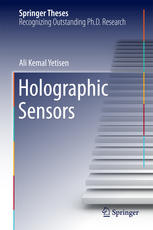

Most ebook files are in PDF format, so you can easily read them using various software such as Foxit Reader or directly on the Google Chrome browser.
Some ebook files are released by publishers in other formats such as .awz, .mobi, .epub, .fb2, etc. You may need to install specific software to read these formats on mobile/PC, such as Calibre.
Please read the tutorial at this link: https://ebookbell.com/faq
We offer FREE conversion to the popular formats you request; however, this may take some time. Therefore, right after payment, please email us, and we will try to provide the service as quickly as possible.
For some exceptional file formats or broken links (if any), please refrain from opening any disputes. Instead, email us first, and we will try to assist within a maximum of 6 hours.
EbookBell Team

4.8
64 reviewsThis thesis presents a theoretical and experimental approach for the rapid fabrication, optimization and testing of holographic sensors for the quantification of pH, organic solvents, metal cations, and glucose in solutions.
Developing non-invasive and reusable diagnostics sensors that can be easily manufactured will support the monitoring of high-risk individuals in any clinical or point-of-care setting. Sensor fabrication approaches outlined include silver-halide chemistry, laser ablation and photopolymerization. The sensors employ off-axis Bragg diffraction gratings of ordered silver nanoparticles and localized refractive index changes in poly (2-hydroxyethyl methacrylate) and polyacrylamide films. The sensors exhibited reversible Bragg peak shifts, and diffracted the spectrum of narrow-band light over the wavelength range λpeak ≈ 495-1100 nm. Clinical trials of glucose sensors in the urine samples of diabetic patients demonstrated that they offer superior performance compared to commercial high-throughput urinalysis devices. Lastly, a generic smartphone application to quantify colorimetric tests was developed and tested for both Android and iOS operating systems. The sensing platform and smartphone application may have implications for the development of low-cost, reusable and equipment-free point-of-care diagnostic devices.